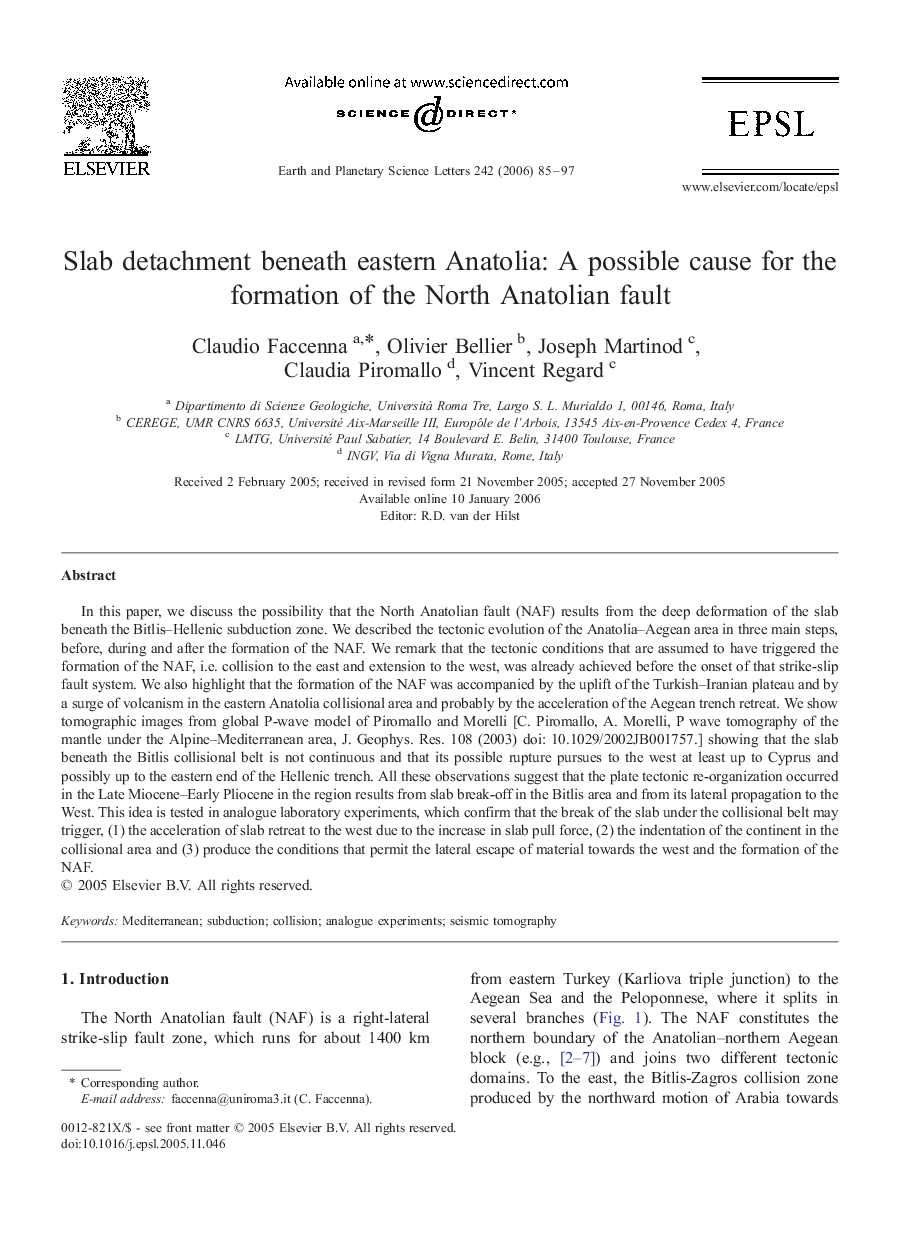| کد مقاله | کد نشریه | سال انتشار | مقاله انگلیسی | نسخه تمام متن |
|---|---|---|---|---|
| 4681140 | 1634951 | 2006 | 13 صفحه PDF | دانلود رایگان |

In this paper, we discuss the possibility that the North Anatolian fault (NAF) results from the deep deformation of the slab beneath the Bitlis–Hellenic subduction zone. We described the tectonic evolution of the Anatolia–Aegean area in three main steps, before, during and after the formation of the NAF. We remark that the tectonic conditions that are assumed to have triggered the formation of the NAF, i.e. collision to the east and extension to the west, was already achieved before the onset of that strike-slip fault system. We also highlight that the formation of the NAF was accompanied by the uplift of the Turkish–Iranian plateau and by a surge of volcanism in the eastern Anatolia collisional area and probably by the acceleration of the Aegean trench retreat. We show tomographic images from global P-wave model of Piromallo and Morelli [C. Piromallo, A. Morelli, P wave tomography of the mantle under the Alpine–Mediterranean area, J. Geophys. Res. 108 (2003) doi: 10.1029/2002JB001757.] showing that the slab beneath the Bitlis collisional belt is not continuous and that its possible rupture pursues to the west at least up to Cyprus and possibly up to the eastern end of the Hellenic trench. All these observations suggest that the plate tectonic re-organization occurred in the Late Miocene–Early Pliocene in the region results from slab break-off in the Bitlis area and from its lateral propagation to the West. This idea is tested in analogue laboratory experiments, which confirm that the break of the slab under the collisional belt may trigger, (1) the acceleration of slab retreat to the west due to the increase in slab pull force, (2) the indentation of the continent in the collisional area and (3) produce the conditions that permit the lateral escape of material towards the west and the formation of the NAF.
Journal: Earth and Planetary Science Letters - Volume 242, Issues 1–2, 15 February 2006, Pages 85–97